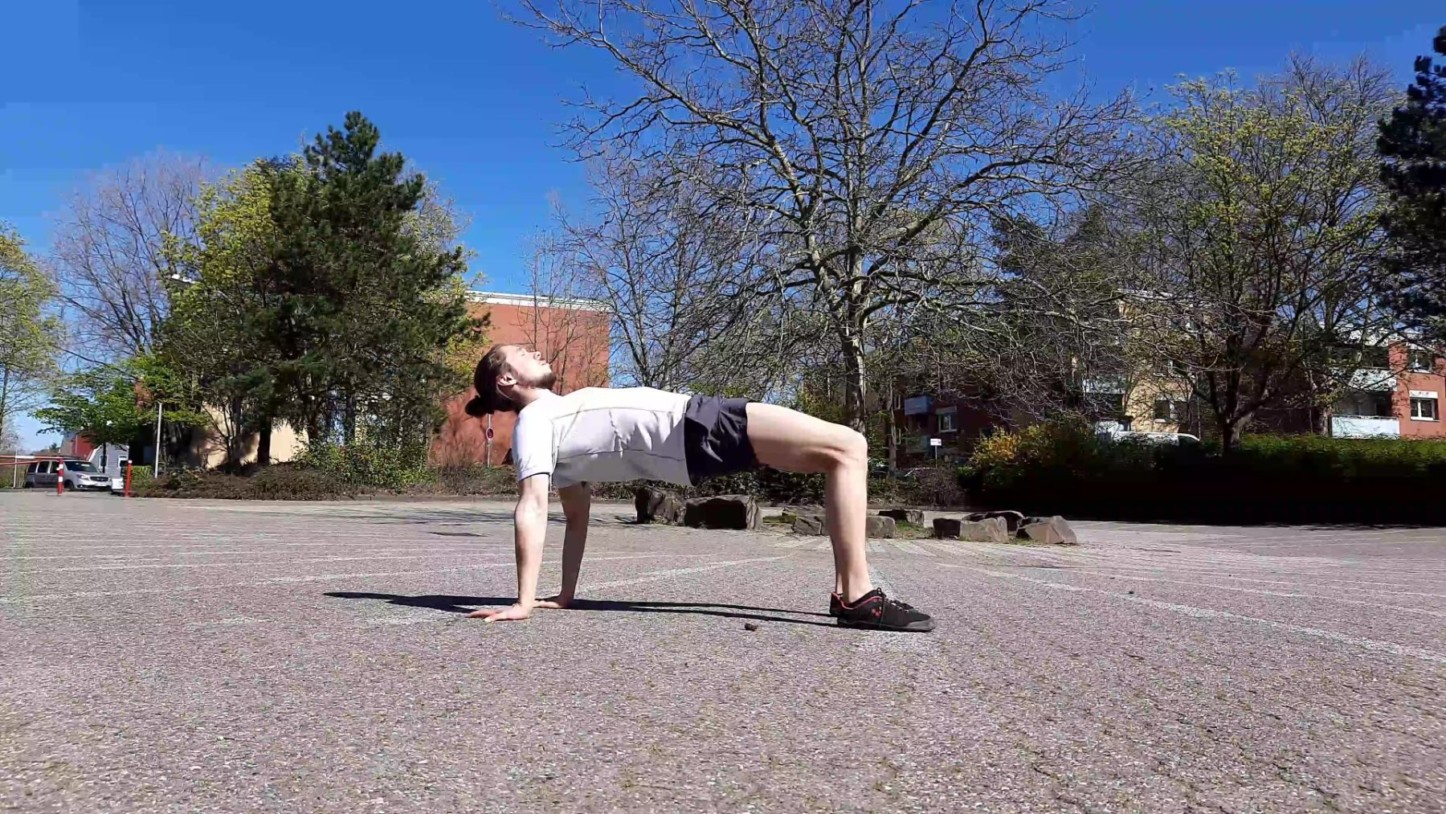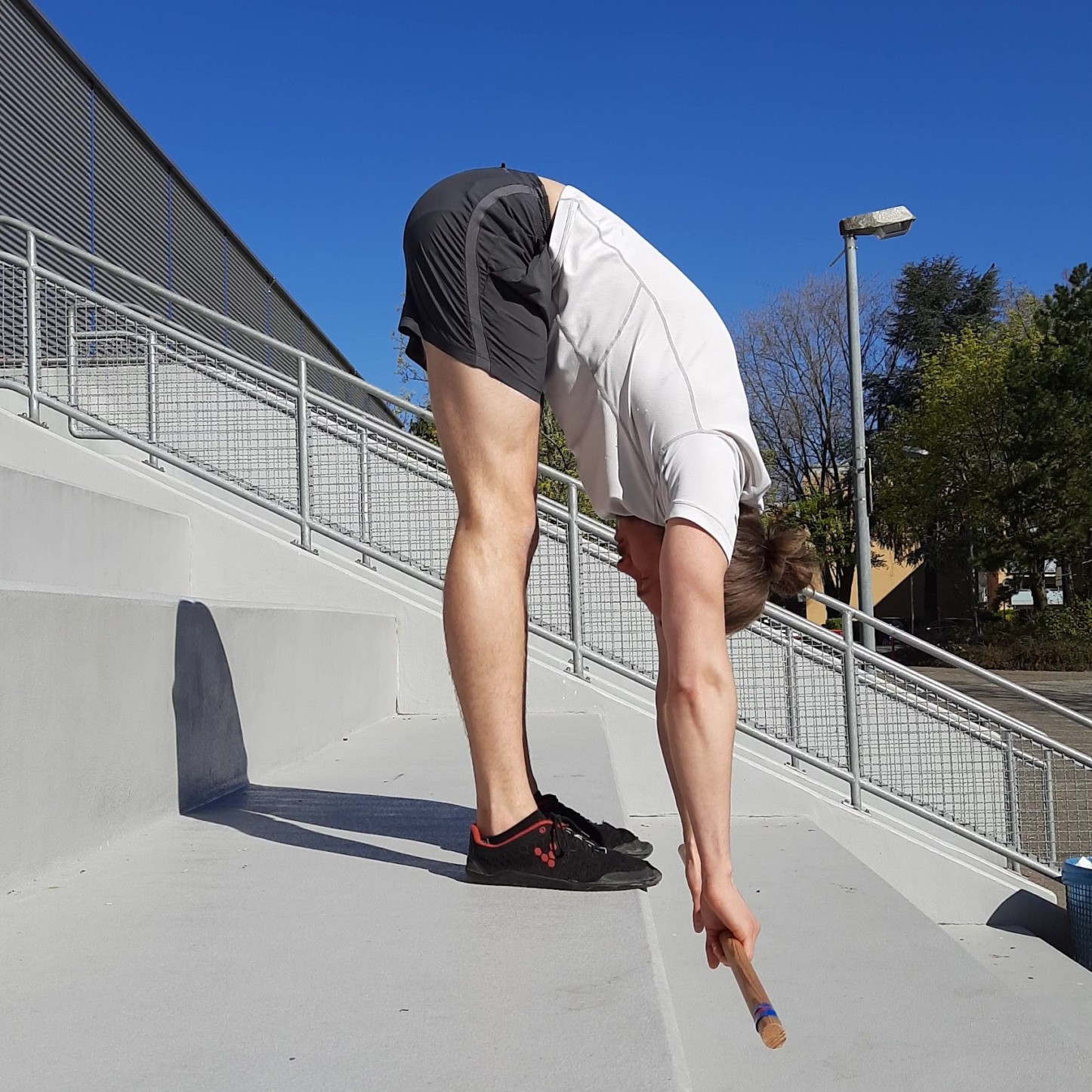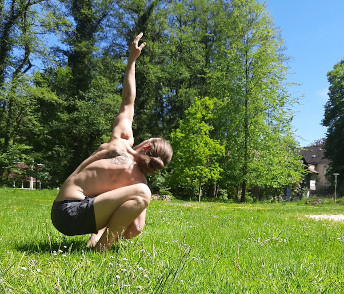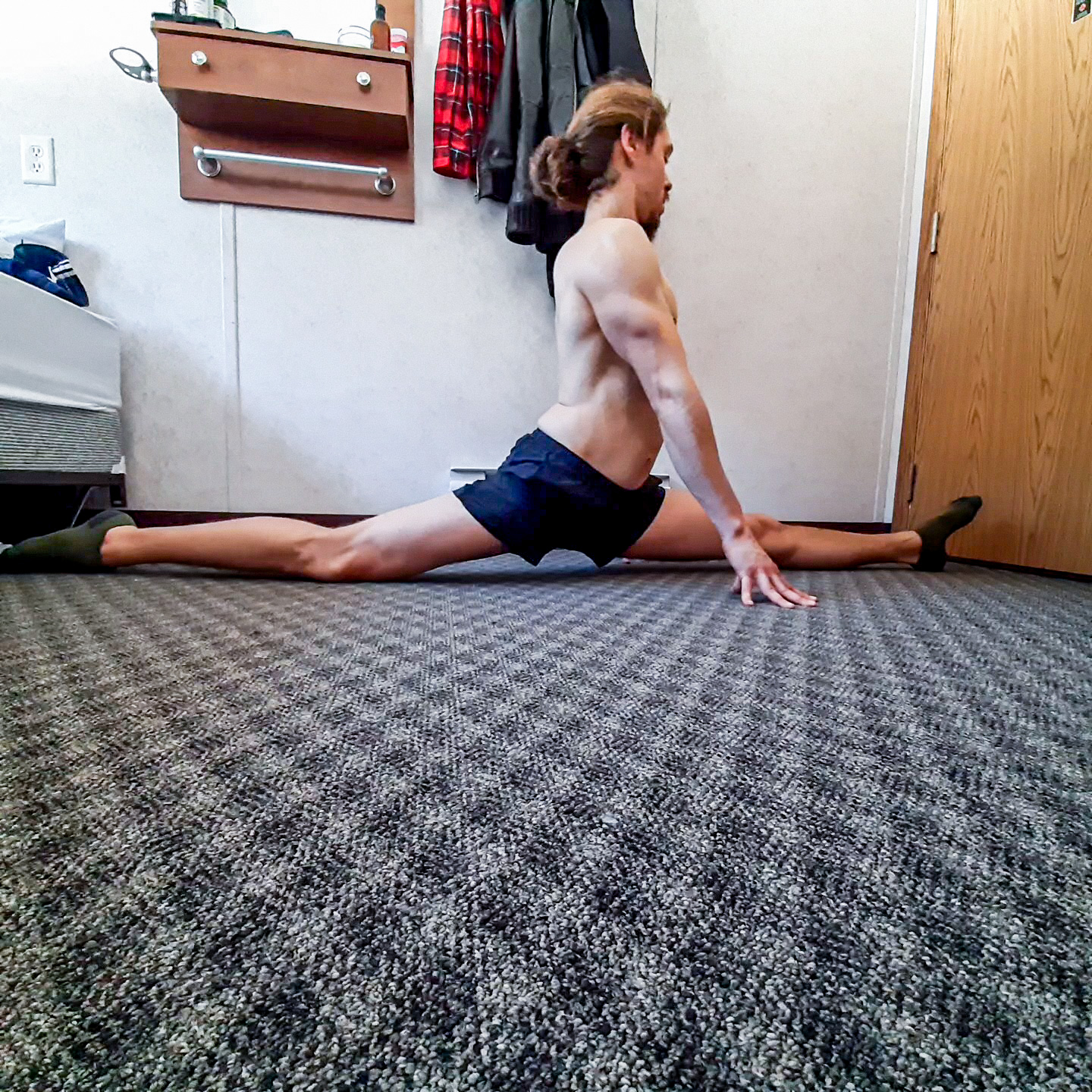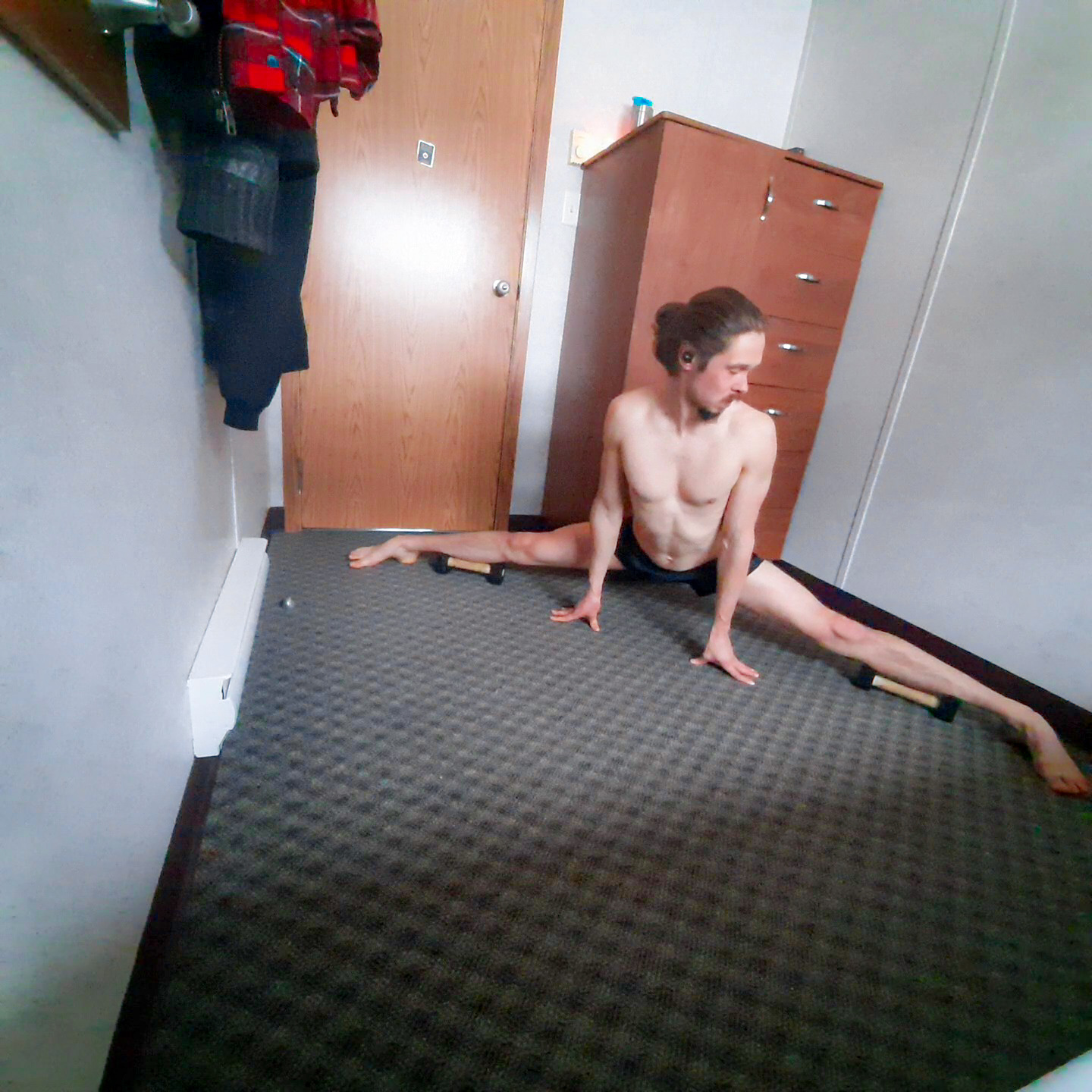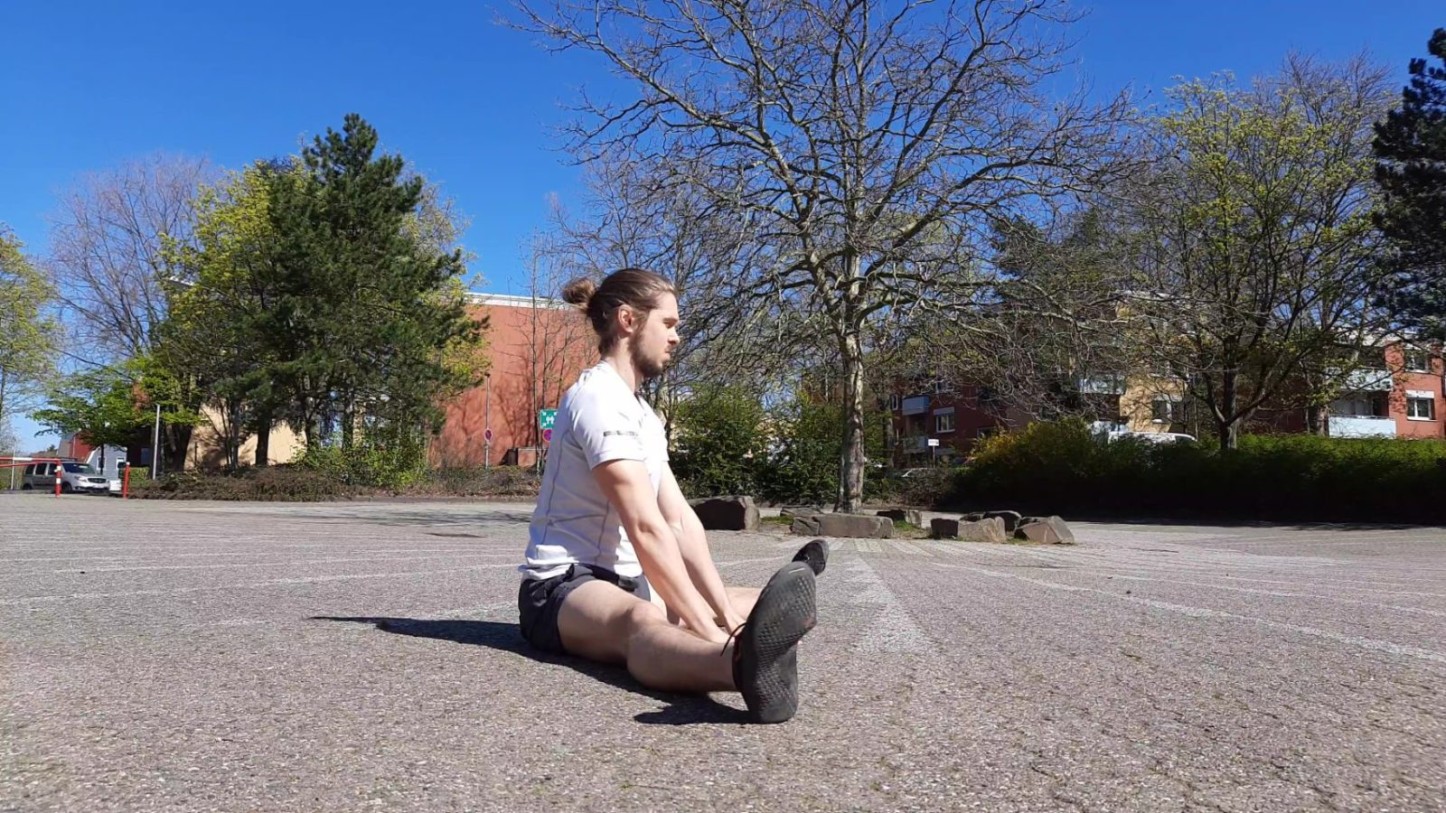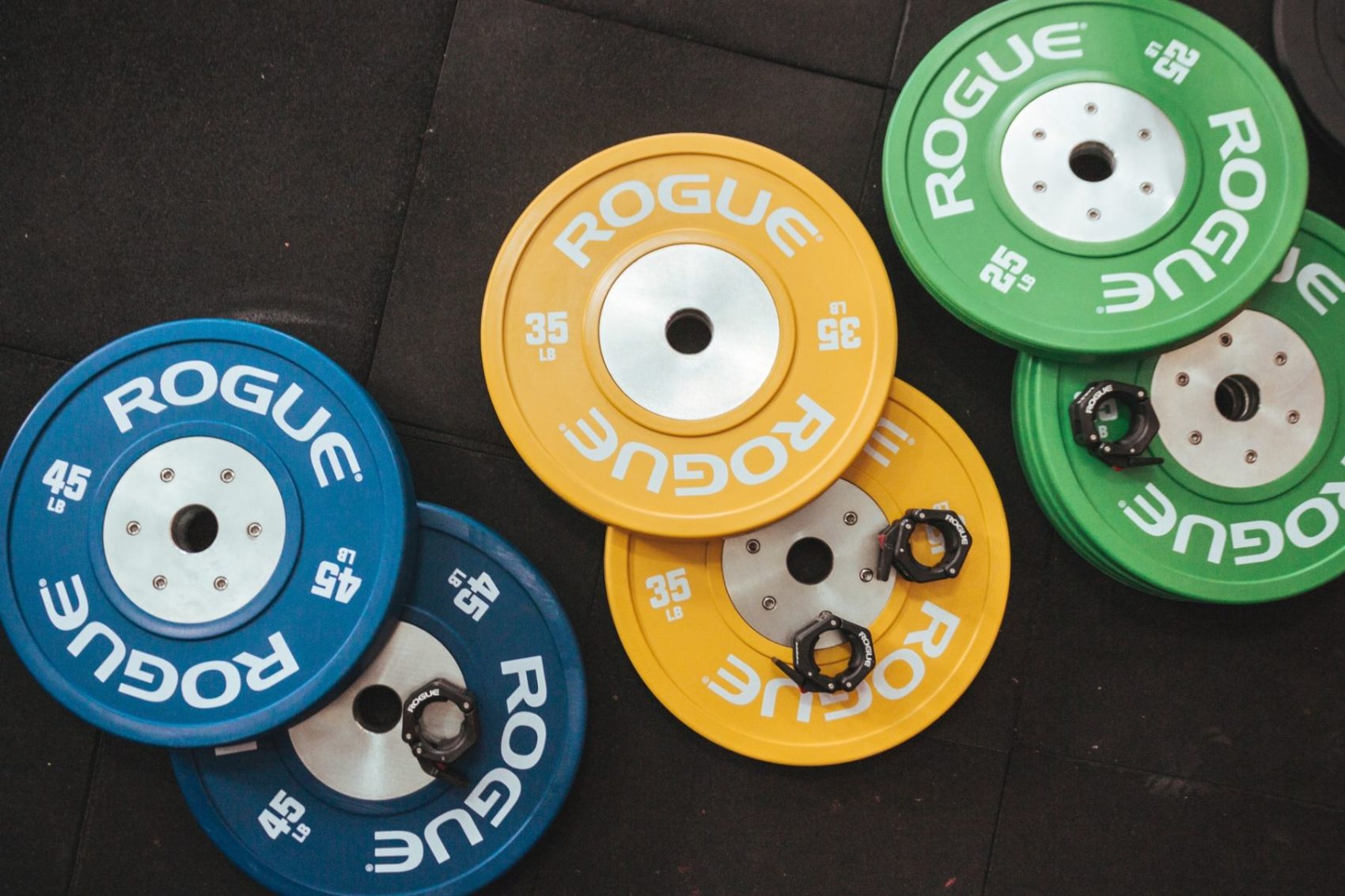Likewise the big functional strength movements there are big flexibility positions. Many make the mistake and try to look specifically at the muscles at first, not the whole position. We’ll look later deeper into this issue.
Knowing these positions enables you to specifically train them and the exact movement patterns – e.g. raw hip flexion at the hip in pike stretch – easily and see results, rather than endlessly stretching your hamstrings without big changes.
In many regards getting more flexible is like getting stronger. There are fundamental positions and developing each of them requires targeted work. It is the same if you want to improve your pushups. Before we get into the actual positions we look at why the framework of positions is superior to the muscles-first approach. Let’s do this!
Why to think in Flexibility Positions rather than stretching Muscles?
If you follow me for some time, you’ll know I am a big fan of addressing positions within strength training – the same applies to flexibility positions. Unless you have specific issues – a weak biceps within certain movements, severe imbalances, or pain in some joints – the holistic approach is superior:
- By looking at the movements you can train each movement to get better at it. Want to get stronger pullups? Train pullups and a few supplementary pull exercises rather than endlessly Lat and Biceps. You want to planche? Get specific and train planche-resembling push exercises or progressions.
- For every basic movement pattern exist lots of different movements. Just think of horizontal pulling patterns and rows or vertical pushing and dips. In that manner, you can make sure you cover each movement your body is capable of without forgetting one.
Therefore I lined out 4 exercises each for your upper and lower body. They should support you as a framework to get more flexible in the ways you wish. It is all about knowing what to train and then doing it. Success is about specificity. Remember the old SAID principle?
Specific Adaptation to Imposed Demands
Remember all these below positions are a framework and do not cover each movement pattern that exists. Nonetheless, incorporating these exercises into your training will get most covered and bring you definitely progress in many ways of moving. If you lack a specific movement pattern – e.g. hip internal rotation – look up specific exercises or get yourself help by a specialist.
The 5 Flexibility Positions of your Lower Body
The below 5 movements will cover many movement patterns your lower extremities are capable of. These huge exercises will grant you the biggest bang for your buck.
If you need to train specific movement patterns go for it- but rather use them as supplementary work. Think of it likewise the big strength movements as the benchpress and the triceps extensions as a supplementary exercise.
Pick whichever movement pattern you want to work on, that corresponds to your goals. But I would advise you to not work on more than 2 positions dedicated at a time. You’ll find for every movement the patterns they will mainly work, why this movement helps you to improve your overall flexibility, and good supplementary exercises to get there.
Lower Body Stretch #1: Squat
Why is the Squat a fundamental movement?

The squat is as ancient as our history gets – it is as human as it gets and our default resting position. Acquiring this position grants a few benefits. The squat is very useful in your daily life, squatting can replace excessive bending the lumbar spine, and it is a good benchmark to keep your mobility in check.
Which joint movements does the squat improve?
- Hip flexion
- Hip extension
- Deep knee flexion
- Ankle dorsiflexion.
Besides that a deep squat resembles a pancake position with the hips flexed and lightly abducted – could there be a carryover? I think so.
Which exercises can supplement my squat development?
Go on YouTube and search for a squat mobility routine – you’ll find myriads of different exercises. In fact, many are great, but I found the 9090 Stretch, the Split Squat, and the Squat to Pike the most useful for many people, as those cover all the basic patterns you need for a solid bodyweight squat.
Lower Body Stretch #2: Pike
Why is the Pike a fundamental movement?

The Pike position will have a huge carryover to many exercises and even make them easier. Hanging leg raises and L-Sits will get much easier with flexible hamstrings. Other skills as a V-Sit or Presses are close to impossible without it.
Which movement patterns does the Pike Stretch improve?
- Hip Flexion
- Flexes the entire posterior chain
Which exercises can supplement my pike development?
Single legged pikes, calf stretches, the Jefferson curl. and kicks can help you to speed up your pike journey. Plus, I found stretching your pike standing, lying, hanging*, and basically very helpful, as all of these variations work it slightly differently.
Lower Body Stretch #3: Straddle
Why is the Straddle a fundamental movement?

The Straddle Stretch resembles the pike stretch – in fact it is simply a pike stretch with the legs wide. This simple difference will change much biomechanically. Plus, the straddle stretch will lead into a pancake – if you will – and transfer to many bodyweight skills. Moreover, it stretches your entire posterior chain and works your flexor muscles.
Which movement patterns does the Straddle Stretch improve?
- Hip flexion with wide legs
- Hip abduction
- It stretches your entire posterior chain.
Which exercises can supplement my #pancakejourney?
Improving your pike will improve your straddle – so at first, make sure you got a solid pike. Beyond the pike, middle split exercises as middle split slides and the butterfly stretch will help your straddle. Plus, PNF, loaded stretches*, and ballistics are awesome to progress successfully.
Lower Body Stretch #4: Front Split
Why is the Straddle a fundamental movement?

The Front Split might seem out of reach for most. In fact, it needs some work but is generally attainable by anyone. Nonetheless, working through the basic progressions will especially improve your hip extension and internal rotation – two movement patterns many struggle with, and our modern lifestyle nearly forgot.
Which movement patterns does the front Split improve?
- Hip flexion/Hip extension
- Hip Internal Rotation
Which exercises can supplement my front split progress?
Great points to start with your front split journey are to improve your single leg pike, your internal rotation, and your hip extension. The couch stretch, long lunges, the W-Sit, and single-leg pikes will get this job done. Beyond that training, the actual skill is important to finally nail the skill.
Lower Body Stretch #5: Middle Split
Why is the Middle Split a fundamental movement?

Ok, let’s be honest – this is a fucking tough one. Nonetheless, working through the journey teaches you a lot and improves a few unique joint capacities.
Which movement patterns does the Middle Split improve?
- Raw Hip Abduction
Which exercises can supplement my Middle Split Journey?
Great exercises are the butterfly stretch, the pancake, sliding single-legged middle splits, hip abduction flys, and the horse stance. All these will make up for years of training to finally get there. As with all flexibility skills, don’t forget the actual real deal.

The 5 Flexibility Positions of your Upper Body
Likewise the former movements this is by no means a definitive list and just my framework of movements that covers most patterns and helps you improve them. As there aren’t as many specific upper body positions, this section is more pattern-heavy.
Upper Body Position #1: Hang/Handstand
Why are the Hang and Handstand fundamental patterns?
What progressions of these two work are your raw shoulder flexion – the ability to get your arms with locked elbows overhead. A movement pattern many people nowadays are not capable of, because our modern life doesn’t require it anymore.
Which movement pattern do these two improve?
- Shoulder Flexion
Which exercise can supplement my shoulder flexion?
The Butcher’s Block and shoulder flexion stretch with straight arms are great exercises to open up your shoulders. Besides these two, lifting up a lightly weighted stick* from the floor while lying on your stomach will work your active shoulder flexion.
Upper Body Position #2: Table Pose
Why is the Table Pose a fundamental position?

The table is an awkward move at first. Extending your arms behind your is a very unknown movement pattern and seldom used. If your goal is a V-Sit, mastering the gymnastic rings* or different ground-based Flips this pattern gets important.
Which movement pattern does the Table Pose improve?
- Shoulder Extension
Which exercises can supplement my Shoulder Extension?
The Reverse Plank and stick shoulder extension raises are alternatives to build this pattern. Combine it with the chair stretch with straight arms, commonly used in gymnastics, and you will surely develop great shoulder extension. Other great exercises to further develop your shoulder extension are the German Hang, the V-Sit, and the freaky Manna Progressions.
Upper Body Position #3: Dislocates
Why is are the Dislocates a fundamental move?
Dislocates cover a wide range of shoulder motion. Plus, this exercise can be used for a variety of purposes – as conditioning, warmup, mobility, or even cooldown exercise.
Which movement pattern does the Dislocates work?
- Shoulder Rotation
- Shoulder Flexion
- Shoulder Elevation
- Shoulder Extension
Which exercise can supplement my Shoulder Rotation?
More Dislocs, man. Besides that Skin the Cats on Rings will further strengthen this pattern and bring your training to a whole ‘nother level of complexity.
Upper Body Position #4: Bridge
Why is the Bridge a fundamental position?
The Bridge is another huge bang for your time move, as it covers loads of patterns and is close to never used in modern life. When I name bridges in the former and latter context I mean all kinds of backbends – the Bridge will be the most accessible goal for most.
Which movement pattern does the Bridge improve?
- Global and Spinal Extension
- Shoulder Flexion
- Hip Extension
Which exercises can supplement my Bridge?
This gets complicated. Improving your front splits, hip flexor stretching exercises, abs, and shoulder flexion will help the most. Exercises I found useful are the half-split lunged backbend, the couch stretch, wall backbends, wall backbend rotations, and the thoracic stall bar opener. Check out Emmet Louis video and routine on the bridge – it is a great entry point!
Upper Body Position #5: Spine Rotation/Side Bending
Why is the Spinal Rotation and Side Bending essential?
You need it every *** day. And even important all these kinds of movements feel freakin’ awesome. They make for great evening stretches or as breaks after sitting in front of your desktop.
Which exercises build the former?
Great exercises are the standing side bend, the straddle side bend, quadruped rotations and the world greatest stretch.

How should I use this Framework of Stretch Positions?
As you’ve surely noticed, the red line of this whole post is specificity of training. Know your goals, know your obstacles, make a plan to attack them, and get to work. But sometimes one has to step out of a framework, break the helpful rules, to get further. Breaking the rules in this context would refer to training specific movement patterns over a position. If you want to learn more about human movement and mobility for your daily life I to you covered and created a free ebook to download:
Let’s get an example and say you want to improve your hip internal rotation to get better front splits and hip functionality. This approach also follows the rule of specificity, but ditches the holistic approach and goes at the level of the lowest resolution – attack one single movement pattern your freakin’ hip can express.
Therefore, use this list as what it is. A framework to guide you and as an entry point into the complicated and vast universe of flexibility training. All these are great positions to work on to either reclaim the baseline of movement capacities every human should be capable of or to further expand your arsenal and get fucking bendy.
Whatever your goals are, I hope you found this list useful and if anything is unclear or you need more information shoot me a comment!


